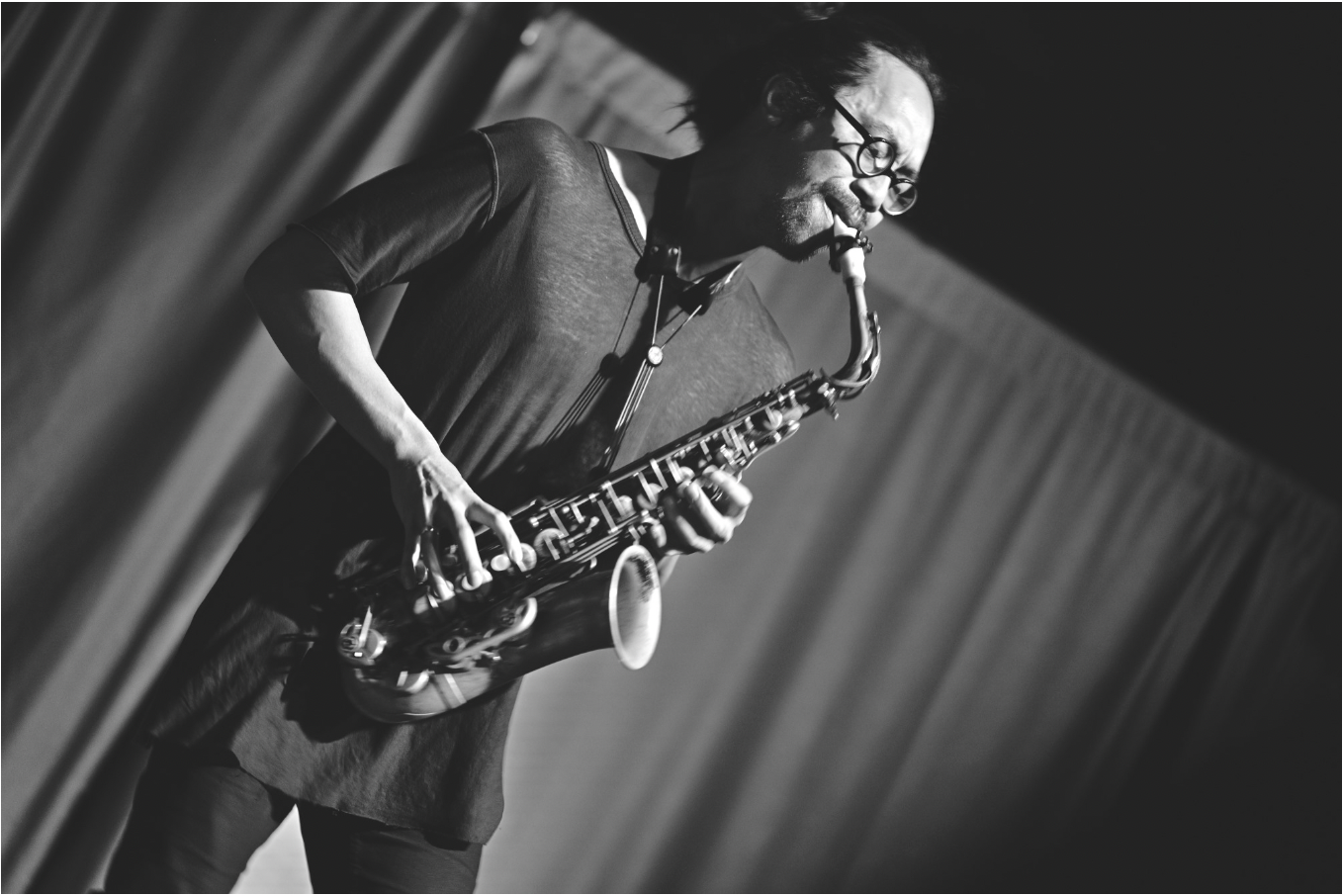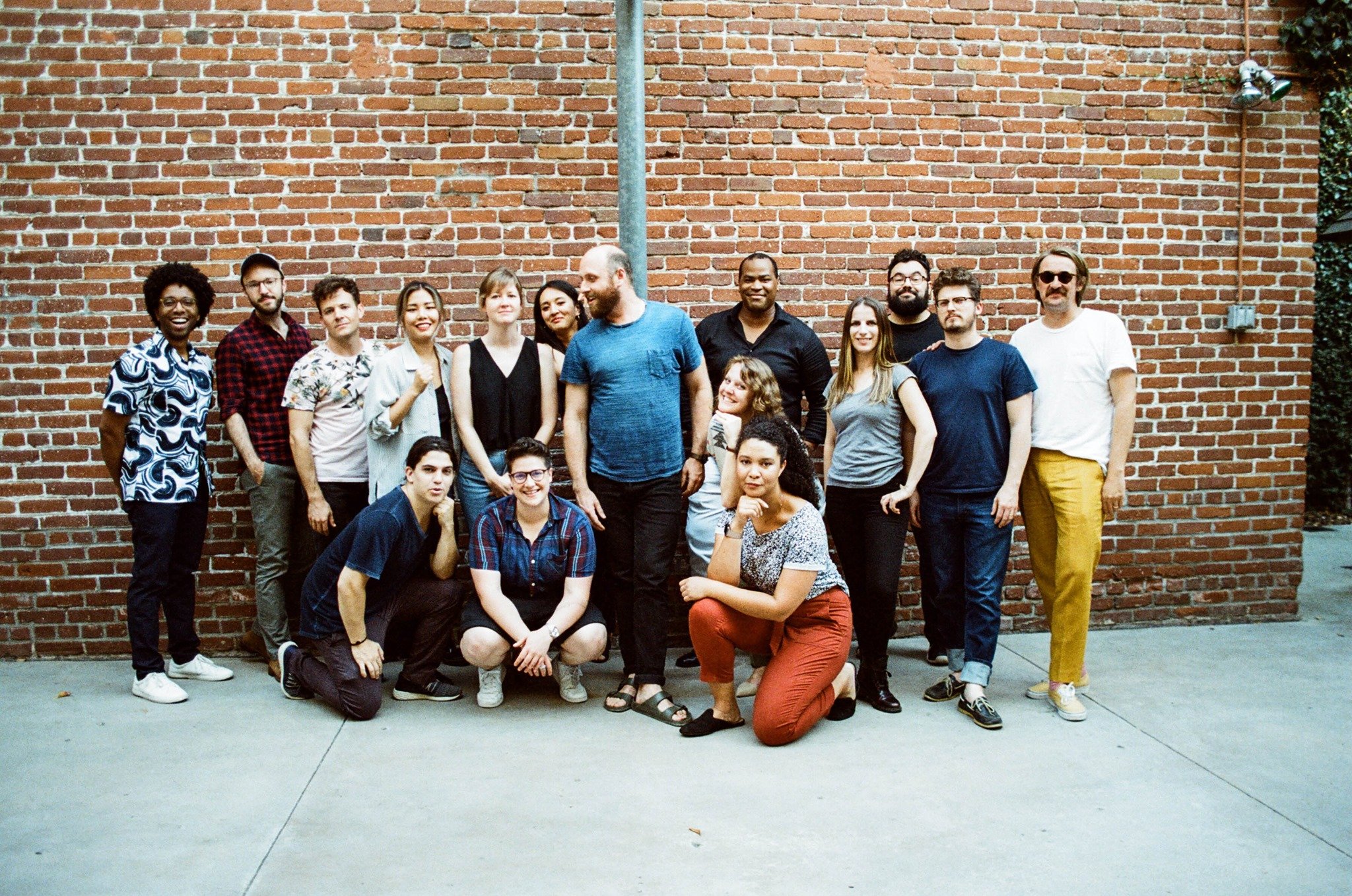
New-music group Wild Up has mischief in its name, so listeners know not to expect the usual. But it was still astonishing when guest artist Patrick Shiroishi seemed to simply mint a fresh fifth part to Giacinto Scelsi’s String Quartet No. 3 before our eyes and ears. Improvising on alto sax during Sunday’s show at 2220 Arts + Archives, on Beverly Boulevard in Los Angeles’ Historic Filipinotown neighborhood, Shiroishi was incredibly sensitive to the form and aesthetic core of Scelsi’s work, patiently selecting times to join the microtonal hovering around one or two pitches and deftly following the shifting timbres. His fascinating engagement with Scelsi’s 60-year-old piece was a jaw-dropping introduction to this musician’s permeable, open way as an improviser.
You often did not know if you were hearing the saxophone or a muted viola, and when Shiroishi joined the harsh, rasping strings with his own fragile squeals, the voice of a woman seemed to hover in the overtones above the quintet. In the late stages of the work, the moments of relief, the saxophonist revealed inner-voice leading not apparent before, opening the final petal of each blooming flower.
Before the show, Wild Up’s artistic director, Christopher Rountree, described how the idea for this program came about: Hearing Shiroishi and Wild Up’s own saxophonist Marta Tiesenga improvising at another event, Rountree thought they sounded incredible together and was reminded of the music of the aristocratic Scelsi (1905–1988), who composed works based on single pitches. The program that came from these straightforward thoughts was straightforward as well: Scelsi’s quartet and Kya for clarinet and seven instruments (1959), plus a new work for saxophone quartet by Shiroishi, Gosenzo.

Scelsi developed a style that involved improvisations that were then transcribed, a process that resembles the kind of composition and performance Shiroishi has honed. Improvising necessitates listening and responding to sound in real time, skills that are far less emphasized in the practice of composing on paper from start to finish.
The second half of the program was reserved for the premiere of Gosenzo (“Ancestors” in Japanese). Shiroishi explained that the piece begins with a minute or so of silence for the players to think on their ancestors, and he gently invited us in the audience to join in the meditation. Maybe this was priming the audience to be invested, but the personal experience I had through the extensive topography of this piece was special nonetheless because I had this touchstone to return to.
Shiroishi built in places for solos for each member of the quartet, leading with baritone saxophonist Pat Posey extending the prayerful singing of the first part of the piece and then rendering that voice into huge polyphonic wails. Each player was given space to respond to the ensemble material, which ranged from driving and striving to sinuous choral writing. Brian Walsh on tenor sax (who had just nailed the solo clarinet part of Kya, mind you) brought us down to a guttural realm of noise, and Tiesenga on alto sax sang lonely and strong.
What caught me repeatedly were the moments when Shiroishi reentered playing. It was always as if he was holding out a hand to whoever was soloing, entering on that player’s level with an acknowledgement of the music they had just made. Gosenzo is a gauntlet of a piece, a half hour of heavy playing and heavy feeling, and it would have been harder without a leader who was listening as much as he was performing.


